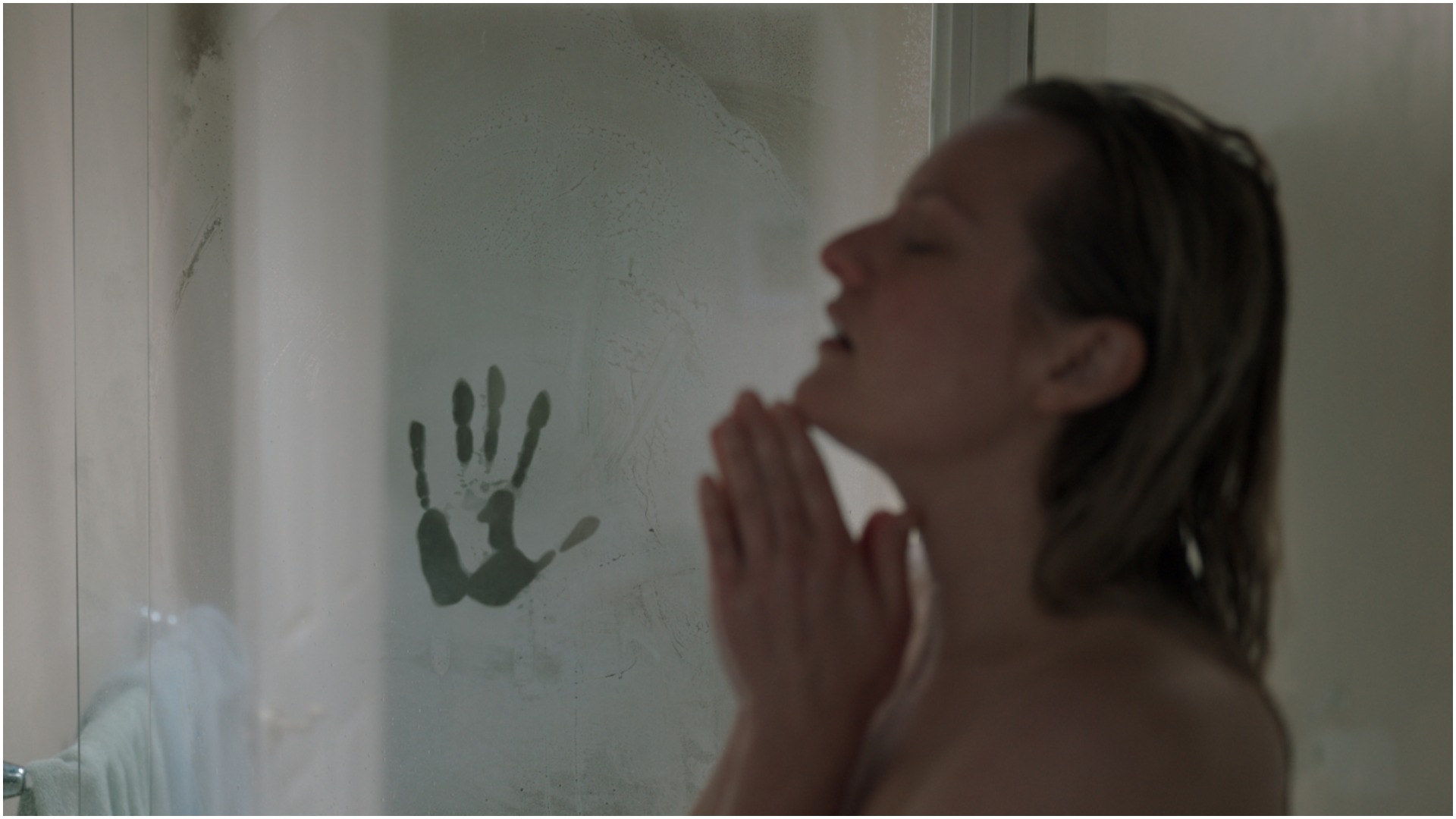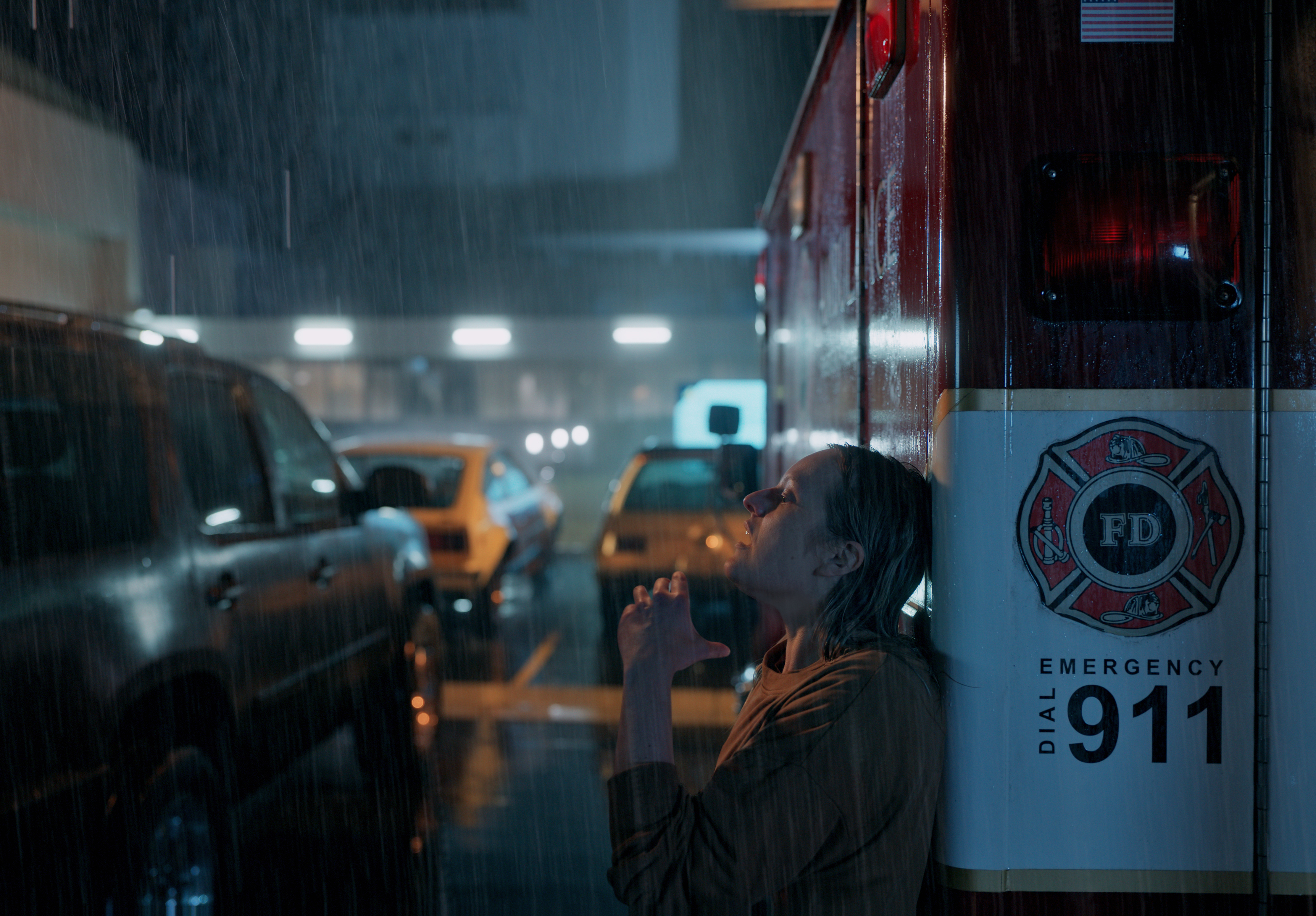The Invisible Man director talks reinventing the character for 2020: “Invisibility is a great metaphor for gaslighting”
We spoke to writer/director Leigh Whannell about rebooting The Invisible Man, the Dark Universe and real world monsters

The Dark Universe is dead.
Universal’s ill-fated attempt to launch a monster-filled cinematic universe came a cropper when The Mummy spectacularly unravelled in 2017. But there’s no time to mourn the loss of Johnny Depp’s Invisible Man, Russell Crowe’s Henry Jekyll or, er, whoever Tom Cruise played, as a frightful new take on a classic Universal Monster is heading our way in February, courtesy of horror maestros Blumhouse and Upgrade writer/director Leigh Whannell.
“I never really knew what they were planning with the Dark Universe, or any previous iterations of The Invisible Man,” Whannell tells GamesRadar+ and Total Film. “Essentially, the title was pitched to me as if it was just lying around and no one had touched it. They didn’t tell me what direction they wanted to go in, I was given a lot of freedom. So it feels, to me, like a real standalone film. It’s based on this character that’s been around so long, but I took it in my own direction.”
For starters, the protagonist of Whannell’s Invisible Man isn’t the titular transparent fella, but Elizabeth Moss’ Cecilia Kass, who we see fleeing her abusive husband Adrian (Olivier Jackson-Cohen) in the trailer’s opening moments. Shortly after, Adrian kills himself, leaving Cecilia $5 million on the deeply suspicious proviso she “can’t be ruled to be mentally incompetent”. But when your ex is a brilliant scientist who can seemingly fake his own death and turn invisible, Cecilia’s sanity is the least of her concerns.
We hopped on the phone with Whannell to discuss The Invisible Man just as the new trailer, which you can watch below, launches online. Topics covered include why the film is more Gone Girl than Dracula, the unlikely parallels with Aquaman and how they’re achieving the invisibility effects. Read our Q&A with the director below (edited for clarity).
The Invisible Man (1933) was a fairly faithful adaptation of H.G. Wells’ novel, but you’ve gone in a different direction. Did you see an opportunity to make this Victorian character relevant in 2019?
I saw a real opportunity. It was something that was pitched to me; I was not out there hankering to make an Invisible Man movie. Though obviously I’m a big fan of the classic Universal Monsters and the original literary characters. I had just finished Upgrade, which I was very happy with, and Universal called me in for a meeting. I thought that they were going to sit there and praise me for an hour, because there’s no one who can praise better than a Hollywood studio executive. But they spent 30 seconds talking about Upgrade, and then moved on to The Invisible Man. I sat there mystified, like, “Why are we talking about The Invisible Man?” [laughs] And then one of the guys in the meeting just off-hand said, “These movies are hard to write. If The Invisible Man is the good guy, what scares The Invisible Man? Who’s the bad guy?” And I said, “Well, he’s not the good guy. He’s the bad guy, obviously.” And they all said, “Ooh, that’s interesting.”
Bringing all the latest movie news, features, and reviews to your inbox
Traditionally, The Invisible Man is a scientist driven mad by his experiment. But Adrian is a much more grounded monster: a vindictive, abusive spouse.
Yeah, exactly. That’s why I think invisibility is a great metaphor for gaslighting, and psychological torture. You know, when you escape from a bad situation, whatever the scenario – whether it’s from a parent or from a loved one or whatever it is – you don’t just suddenly dust your hands up and carry on with life. You carry these scars around. It takes a long time to get rid of them. So I thought invisibility was a great metaphor for that.
Cecilia is the one carrying these scars around. What makes her a compelling protagonist?
Cecilia is a really intelligent young woman who had all this potential, but it was cut short by getting stuck in a toxic relationship where she was basically held prisoner. This is something that happens every day to women around the world, where they’re trapped in a relationship with someone who’s controlling them. I did a lot of research, and read stories of women who are trying to escape, and how much they have to plan to start a new life. And then even if they do get out, they’re always looking over their shoulder, and waiting for their partner to show up. So for me, Cecilia represented that woman who wanted to pick up the pieces of her life, and press forward with it. She is not a pathetic person, or a victim who got themselves in this bad situation through their own stupidity. She’s a smart person with a lot of potential who just ended up falling in love with the wrong person.
Your films are rarely short of humour, but it seems you’re playing it pretty straight here...
Yeah. I wanted to make something that was like a boot on the throat of the audience. I wanted to make a relentless R-rated horror movie, something that was stressful for the audience to watch. So it isn’t jaunty in tone, let’s put it that way [laughs]. The rollicking horror action-comedies that you may see coming out of studios – that was exactly the opposite of what I wanted to do. I wanted to make something closer to a film like Hereditary where you feel you’re being suffocated.

The Invisible Man doesn’t have the same cultural footprint as a Dracula or a Frankenstein. Did that give you confidence a more radical reinvention like this would be accepted?
Totally. Dracula and Frankenstein sit in the public consciousness, and there’s been a lot of vampire movies that feed off that original Dracula novel. The Invisible Man isn’t like that. I remember talking to James Wan, a good friend of mine, when he did Aquaman, and I asked him, “Why do you want to make this film?” And he said, “Well, Superman and Batman, they’re the rock stars. But Aquaman is more of a background player. People think of him as a joke. And that’s the perfect opportunity for me to wipe that away. You make a great film, and all of a sudden, Aquaman’s not being thought of as an also-ran anymore.” There was a little bit of that same feeling with The Invisible Man. I felt he hadn’t had his moment in the sun for a long time. And that there was a huge opportunity to make it really scary.
Part of that fear comes from the contemporary setting. Did you ever consider making a period horror?
No. That was definitely something that excited me, bringing him into a modern context. I didn’t want to make anything gothic. Some people who make films based on characters that have been around so long and have such a literary and cinematic pedigree, they may pay stylistic homage to the films of yesteryear: the fog around the cemetery, the lightning crackling over the asylum, all that sort of stuff. I didn’t want to do that. What I wanted to do was make this really stark and grounded and real, like a very modern clinical film. I wanted to make something closer to Gone Girl than Bram Stoker’s Dracula. So that was my way in.
We see one brief shot of a man in bandages towards the end of the trailer. Are you paying homage to the iconic Claude Rains look with that shot?
Yeah, I would say so. For me, that’s really an homage to that original character. There’s a couple of things like that in the film. It’s fun to do that. I think that’s my way of tipping my hat to that original mythology and, you know, showing the reverence I have for these characters.
The brief flurries of violence are reminiscent of the way you shot the action in Upgrade...
Definitely. That’s a style that I really love, and I definitely wanted to keep that going. The stunt team would call them “Whannells”. They would be like, “We’ve got a ‘Whannell’ coming up!”, where there’s a moment in the shot where the camera locks to the actor. Stefan Duscio, who was the cinematographer on Upgrade, is also the cinematographer on this. Each film has to have its own style. You need to let the film tell you what it wants to be. But I definitely wanted to keep that Upgrade style of shooting action that we developed going.
Did you have to consider the practicalities of invisibility?
That’s something I thought about a lot. It was one of the fun parts going into it. I said, “I want this film to feel very realistic to the audience.” I didn’t want to do anything that was outlandish or gothic or transported the audience to another time and another place. I wanted them to feel like this is happening right now, and this could be happening in their neighbourhood. So that was certainly a challenge, because obviously invisibility is still an outlandish concept.
How are you achieving the invisibility effects? Is it primarily CGI, or are there old-school practical tricks going on?
It’s a mixture of everything, really. There’s a lot of old-school practical stuff, which I love. And obviously, CG is such a gift to me. There’s so many things that CGI can do to improve your film. And, I’m not going to lie, there was a little bit of the old green suit going on. The old unitard. Is that what they call it? It’s a one-piece. Hopefully when you see the film, it feels very real and seamless.
The Invisible Man reaches UK cinemas 28 February 2020.

I'm the Managing Editor, Entertainment here at GamesRadar+, overseeing the site's film and TV coverage. In a previous life as a print dinosaur, I was the Deputy Editor of Total Film magazine, and the news editor at SFX magazine. Fun fact: two of my favourite films released on the same day - Blade Runner and The Thing.


